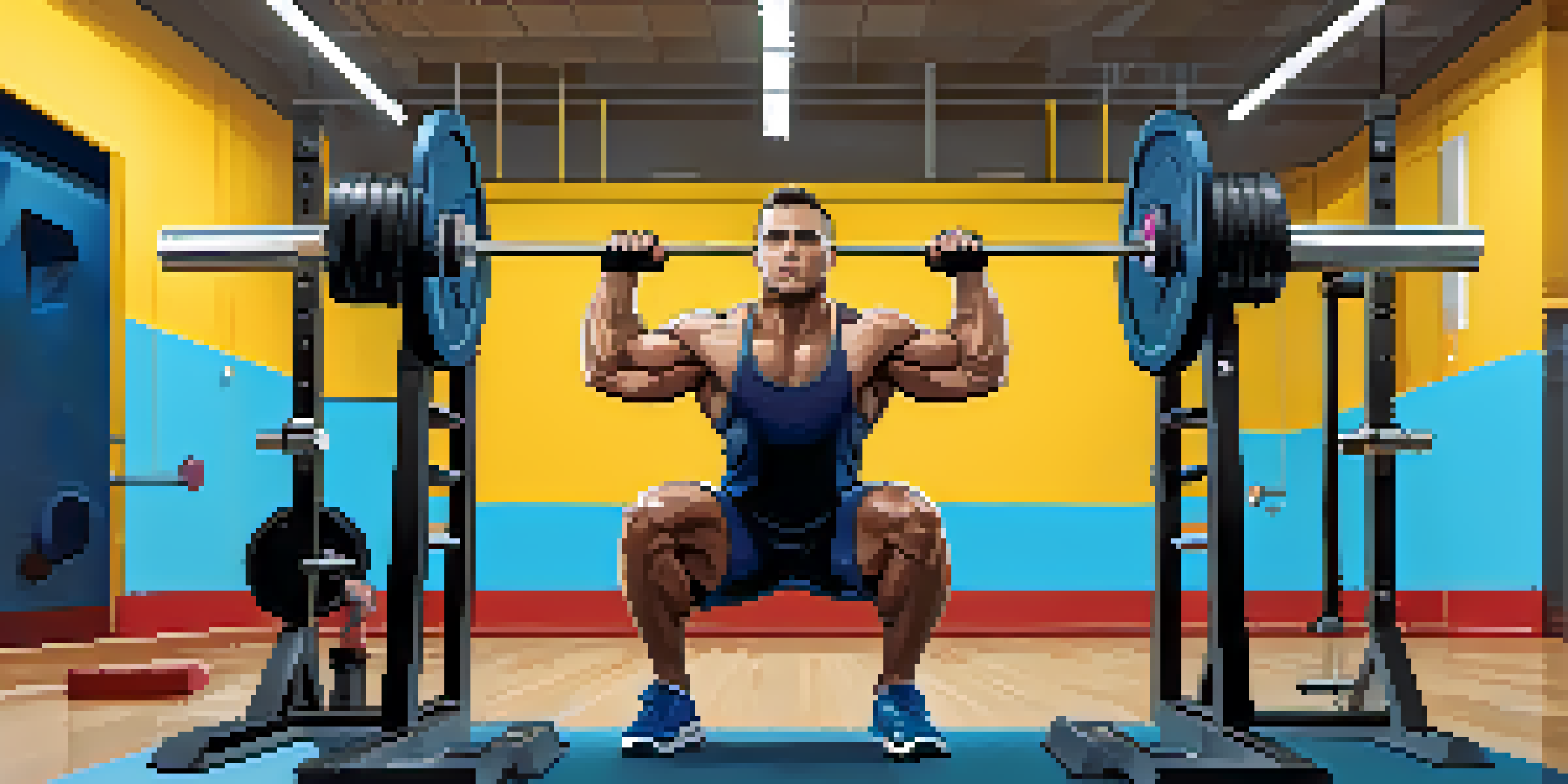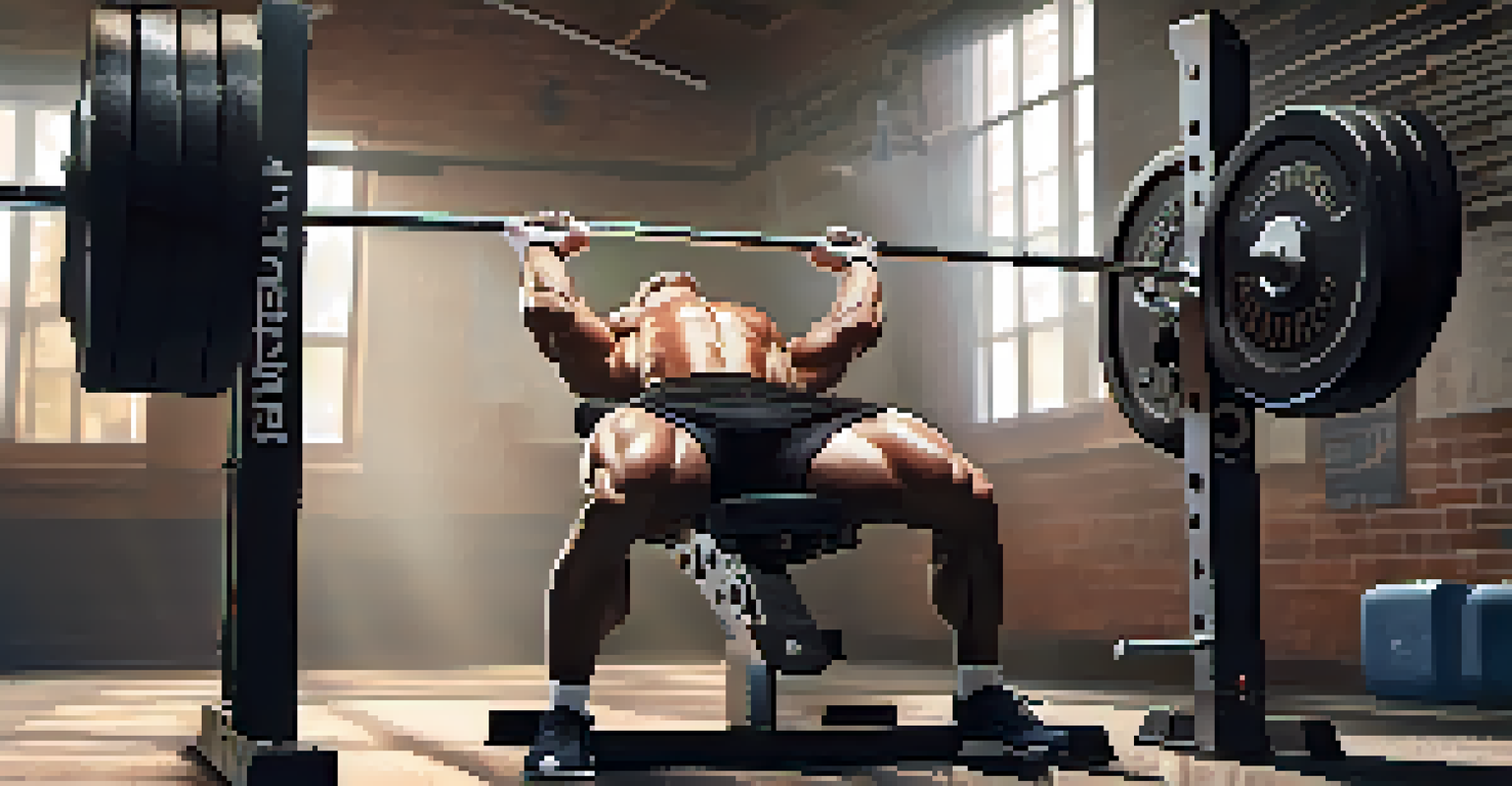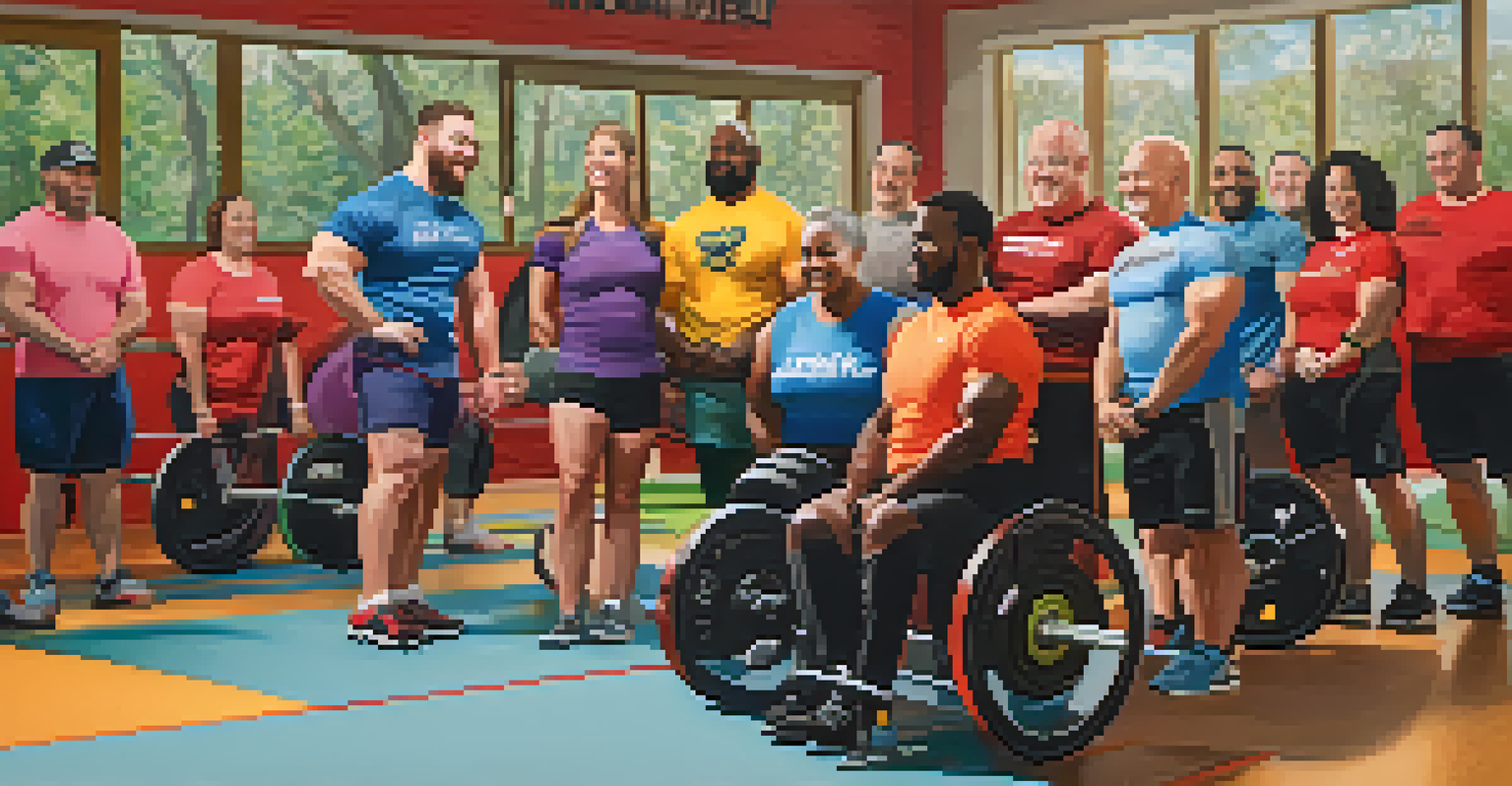Understanding Powerlifting for Individuals with Mobility Issues

What is Powerlifting and Its Benefits
Powerlifting is a strength sport that focuses on three main lifts: the squat, bench press, and deadlift. It’s not just about lifting heavy weights; it’s about building strength, improving technique, and enhancing overall fitness. For individuals with mobility issues, powerlifting can provide a unique pathway to physical empowerment and self-confidence.
Strength does not come from physical capacity. It comes from an indomitable will.
Engaging in powerlifting can lead to numerous benefits, including increased muscle strength, improved balance, and better joint stability. These advantages can enhance daily life activities, making tasks easier and less physically demanding. Moreover, powerlifting fosters a sense of community, encouraging individuals with similar challenges to support each other.
It's important to note that powerlifting is highly adaptable. With the right guidance, individuals with mobility issues can enjoy tailored training programs that accommodate their specific needs. This means that anyone, regardless of their physical challenges, can find joy and fulfillment in powerlifting.
Understanding Mobility Issues and Their Impact
Mobility issues can stem from various conditions, such as arthritis, cerebral palsy, or injuries. These challenges can affect an individual's ability to perform everyday tasks and engage in physical activities. However, understanding the nature of these issues is crucial for tailoring a safe and effective powerlifting program.

For instance, someone with limited range of motion might struggle with traditional squat techniques. In such cases, modifications like box squats or using resistance bands can help. By identifying specific limitations, trainers can create a personalized approach that encourages progress without risking injury.
Powerlifting Empowers Mobility
Powerlifting offers a unique pathway to strength and confidence for individuals with mobility issues through tailored training programs.
It’s essential to remember that every person's experience with mobility challenges is unique. Therefore, an individualized assessment can lead to the most effective strategies, ensuring that powerlifting becomes not just accessible but also enjoyable.
Finding the Right Equipment for Adaptation
Selecting the appropriate equipment is a vital step for individuals with mobility issues who want to engage in powerlifting. Equipment such as adaptive benches, adjustable weights, and supportive braces can significantly enhance the lifting experience. The right gear can provide necessary support while also ensuring safety during workouts.
The greatest glory in living lies not in never falling, but in rising every time we fall.
For instance, using a squat rack that allows for adjustable heights can help individuals get in and out of lifting positions more comfortably. Additionally, resistance bands can offer varying levels of assistance, making lifts more manageable. By utilizing adaptive technologies, individuals can focus on improving their strength without the fear of injury.
Moreover, many gyms are increasingly recognizing the need for inclusive fitness options. This means more facilities are investing in adaptive equipment, making it easier for individuals with mobility issues to participate in powerlifting.
Developing a Customized Training Program
Creating a customized training program is essential for anyone with mobility challenges looking to start powerlifting. A well-designed program should take into account the individual's current fitness level, specific mobility restrictions, and overall goals. This personalized approach ensures that training remains both safe and effective.
In practice, this might mean starting with basic movements and gradually introducing more complex lifts. For example, focusing on bodyweight exercises can help build foundational strength before progressing to weighted lifts. Regular assessments and adjustments to the program are also crucial for continued improvement.
Customized Training is Key
A personalized training program considers individual fitness levels and mobility restrictions to ensure safe and effective powerlifting.
Working with a knowledgeable trainer or coach who understands mobility challenges can enhance the training experience. They can provide valuable insights and modifications, helping individuals overcome obstacles and achieve their powerlifting goals.
The Importance of Proper Technique and Form
Proper technique and form are critical in powerlifting, especially for individuals with mobility issues. Using the correct form not only maximizes the effectiveness of the lift but also minimizes the risk of injury. For those with limited mobility, focusing on form can make a significant difference in their powerlifting journey.
For example, learning to engage core muscles and maintain a neutral spine can help stabilize the body during lifts, making the process safer. Trainers often emphasize the importance of slow, controlled movements to ensure that each lift is performed correctly. This slow approach can also help individuals become more aware of their body mechanics.
Incorporating video analysis can be a useful tool for assessing form. Watching one's lifts in real-time allows for immediate feedback and adjustments, leading to improved performance over time.
Safety Considerations and Injury Prevention
Safety should always be a top priority in any powerlifting program, particularly for individuals with mobility issues. Understanding personal limitations and recognizing when to modify or skip a lift is crucial for preventing injuries. This includes listening to one’s body and being aware of any discomfort that might signal a potential injury.
In addition, using spotters during lifts can provide an extra layer of safety. Spotters can assist in case of an unexpected struggle, allowing individuals to lift with confidence. Furthermore, incorporating a thorough warm-up and cool-down routine can help prepare the body for lifting and aid in recovery afterward.
Community Support Matters
Joining a supportive powerlifting community provides encouragement and motivation for individuals facing mobility challenges.
Educating oneself about the signs of overexertion and injury is also essential. By being proactive about safety, individuals can enjoy a fulfilling powerlifting experience while minimizing risks.
Building a Supportive Community in Powerlifting
One of the most rewarding aspects of powerlifting is the community that surrounds it. For individuals with mobility issues, finding a supportive network can be incredibly empowering. This community can offer encouragement, share experiences, and provide valuable resources for training and injury prevention.
Participating in local powerlifting groups or online forums can connect individuals with others facing similar challenges. These interactions can foster a sense of belonging and motivate individuals to stay committed to their training. Additionally, sharing successes, no matter how small, can boost confidence and inspire others.

Ultimately, the camaraderie found in powerlifting can make a significant difference in one’s fitness journey. Knowing that you are not alone in your challenges can be a powerful motivator to push through obstacles and achieve personal goals.